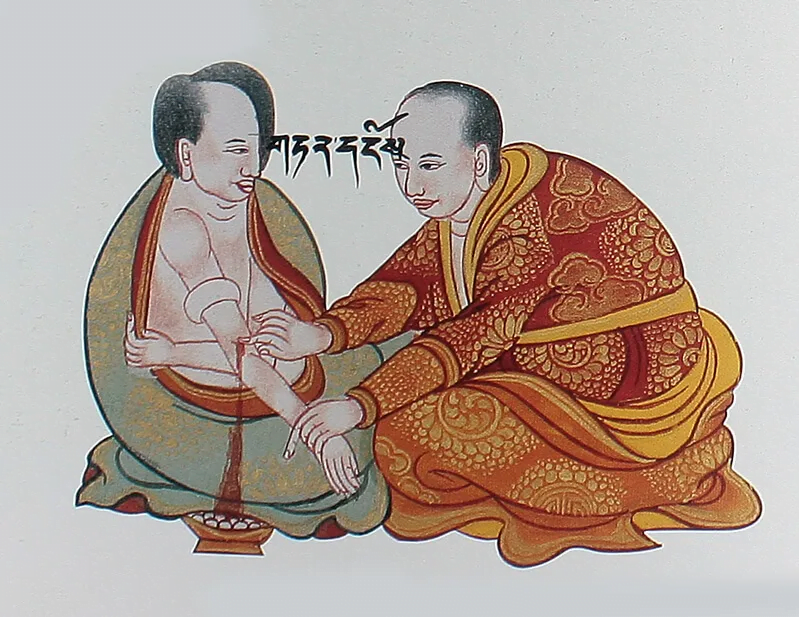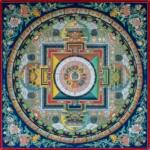Where there is poison, there is medicine
In ancient times, people living in the Tibet Plateau gained knowledge about the characteristics and functions of herbs through their struggle with nature. They utilized herbs for therapies and also discovered the medical functions of certain animals during hunting. This led to the development of the ancient medical theory that states “Where there is poison, there is medicine; medicine and poison coexist and can transform into each other.” This theory is regarded as the earliest foundation of Tibetan medicine.
Theory of Three Factors -Rlung, Bakan, Mkrispa,
The Tibetan people, now living in foreign lands, continue to practice Tibetan medicine, a traditional method of healing with a history spanning over 2,500 years. This practice operates within its own unique system of knowledge, which posits that three main factors summarize the physiological functions of the human body.
The main doctrine of Tibetan medicine is to keep the combination of Nyipa – rLung (pronounced loong), mKhris-pa and Bad-kan in order. The long-term causes of Nyipa’s combination are the three poisons of desire, hatred and delusion, which shows how Tibetan medicine has influenced Buddhism.

First, what is rLung? What is mKhris-pa? And what is Bad-kan?
Before we can explain these words, it must be pointed out that there is no corresponding Sanskrit translation; that is why the first name is used.
The general definition of rLung is that it is a subtle energy transfer from the five elements (air, fire, water, earth and sky) that are closely related to the air. However, it is not just the air we breathe in or the wind that blows from our stomachs. It goes further than that. Let the lungs be like a horse, the mind like a rider; if there is a problem with the horse, the rider will not run well. Its definition is that it is strong, light, calm, good, strong and mobile.
The general function of the rlung is to promote growth, movement, breathing and inspiration, as well as the functioning of the mind, speech and body. RLung helps break down what we eat into food and waste in our stomachs. However, its most important function is to transfer movement of mind, speech and body. The nature of rLung is hot and cold.
Bad-kan is not phlegm from the heart; it refers to all diseases related to cold nature called Bad-kan. Among the five elements (air, fire, water, earth and sky), it affects both water and earth. Description Bad-kan is oily, cool, heavy, hard, soft, stable, and sticky. The main function of the Bad-kan is to maintain moisture. It helps to mix food in the stomach, stabilize the mind and keep our joints flexible. Bad-kan is cold, like water or the moon. Tibetan pathological theory states that the three elements, when balanced, ensure the proper functioning of the body, but imbalances lead to various diseases.
The main teaching of Rlung, Mkrispa and Bad-kan
The main teachings of rLung, mKhris-pa and Bad-kan deal with human physiological activities. Based on different numbers, colors, and characters, these criteria divide people into four types: RLung, mKhris-pa, Bad-kan, and mix types.
Tibetan medicine says that everything in the universe has five proto-elements: wind, earth, water, fire and space. Wind is responsible for movement; the material world; water binds things together; heat or change; and space makes up the living room of creatures. Nothing can happen without one of the five significant factors. The relationship between the body and the environment is logically established according to this medical theory. Physiologist and Dissection
Physiologist and Dissection
In a history of about 1,300 years, Tibetan medicine has built a strong reputation and traditional identity in its understanding of physiology, the organs of the human body, diagnosis and treatment, etc. Therefore, Tibetan medicine is considered one of the oldest and most advanced. traditional health systems in the world. Traditional Tibetan medicine is based on the “Factor Theory”. This doctrine focuses on the “seven elements” and “three elements” of the human body.
All three refer to the above. The seven elements include food, blood, flesh, fat, bone, marrow and reproductive fluid; Sweat, urine, and stool constitute the three wastes. In a healthy person, a well-balanced relationship exists between the three elements, the seven elements, and the three excreta. Maintaining balance is an important principle of traditional Tibetan medicine.




















